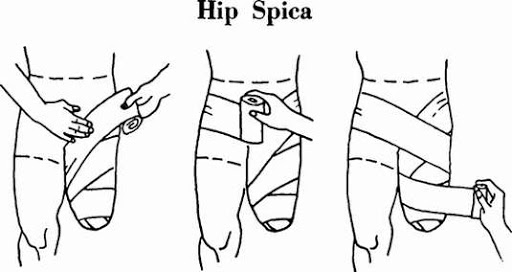The bandaging of amputated limb stumps has been employed for hundreds of years. Bandaging protects the healing wound, reduces swelling, supports the soft tissues and helps shape the stump so that it is ready to receive a prosthesis. The bandage also stops bleeding although other solutions such as tourniquets and cautery of various kinds were used before ligature was employed.
In the Peloponnesian wars (431 to 405 BCE) applying small buckets of hot tar to the end of the stump combined several objectives: cautery for haemostasis; protection from infection; a fixed volume for the stump, thereby containing oedema; and, in some cases, provision for weight-bearing by the addition of a peg attachment.
A variety of dressings have been employed for stump bandaging including lint and sea sponges. Gersdoff in 1517, advocated rabbit fur and egg white and several surgeons employed a pig’s bladder. Today stump bandages are elasticised and come in different widths. The first tensor bandage was developed by Oscar Schwidetzky in 1918. The bandage was named the ACE bandage. ACE stands for “All Cotton Elastic,” and was selected after a nationwide contest that offered physicians $200 for coming up with the best name for the new bandage.
The number and width of stump bandages are selected according to the size and length of the stump. The bandage is applied under moderate tension to the entire stump. Application should be sufficient to apply pressure without compromising the circulatory system. The bandaging should be removed and reapplied regularly to maintain the pressure on the stump.
Description provided by Catherine Sykes of Australia
References:
Murdoch, G. 1983. The post operative environment of the amputation stump. Prosthetics and Orthotics International, 7, 75-78.

